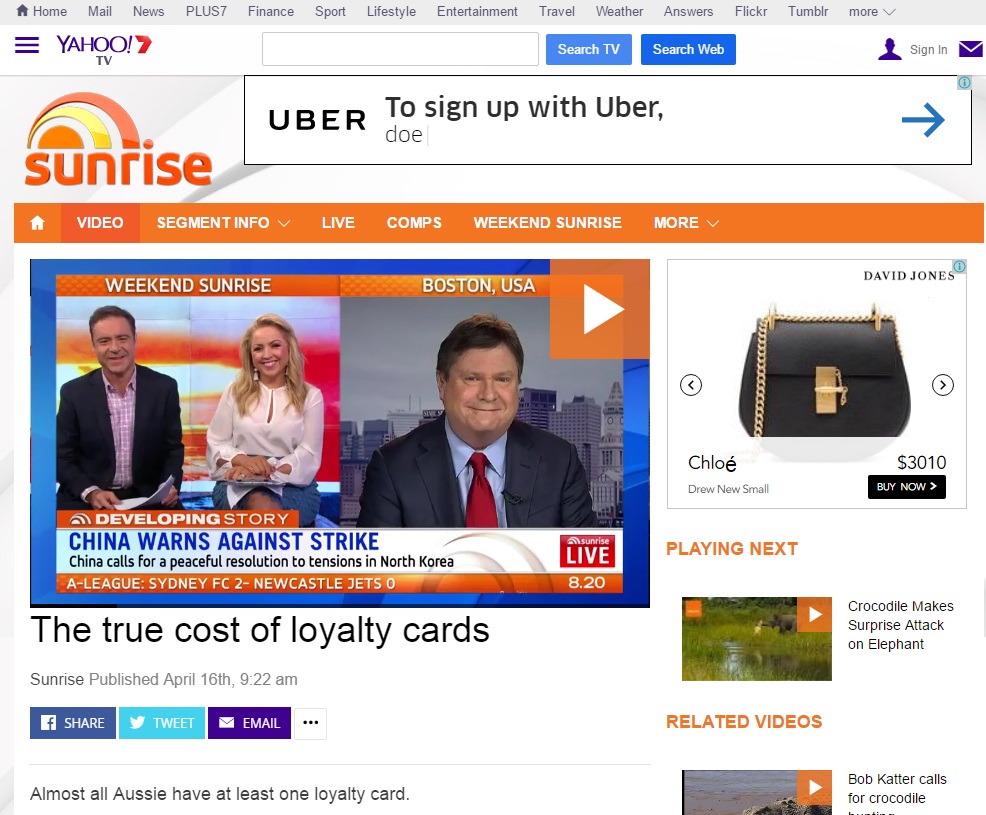
When talking to potential clients wanting help with their media exposure, 90% express the desire to get free airtime on TV. I can’t say I blame them. A mass audience to hear their message, the credibility of being able to say ‘As seen on (insert program)’ and a great promotional tool to use in all future marketing collateral are just some of the advantages. All this without paying the TV network a cent in advertising.
So why would a TV program agree to having you on set without paying for it? Well TV programs such as morning programs, lifestyle shows, current affairs programs and even the news are looking for content that will keep their audience switched on and tuned in. They rely on content that adds value and engages their audience in some way.
So how do you get your business valuable TV coverage? There are certain ingredients that producers look for in creating a TV segment. Below are five things to consider to give you the best chance possible:
- Tie in your angle with an issue that the media is currently focusing on.
Media feeds off each other which is why you’ll have trending issues being focused on at any one time before the media moves to the next issue. Some issues can hang around in the media for a week or two, others move on within a day or two. An example of this is the topic of questioning the relevance of retail rewards programs. An article about this first appeared in the smh, similar articles then appeared across other newspaper titles and even radio jumped on the bandwagon. We took the opportunity to pitch our client www.cashrewards.com.au to the morning programs to talk about alternative and more effective ways to earn rewards from retailers. This resulted in a 5 minute segment on Weekend Sunrise where www.cashrewards.com.au was the dominant talking point within the interview.

2 Work out how you can add value to the audience watching the TV program.
Our client privatefleet.com.au is able to purchase cars on behalf of their customers at a far cheaper price than a one off purchase as they buy in bulk. This doesn’t sound like a very newsworthy topic for TV and in fact it isn’t if you pitch it like that. However one of the Private Fleet’s team members was an ex caryard salesman. He is also fantastic ‘talent’ meaning he was passionate and could talk at length about the topic of purchasing a car. We pitched the angle of ‘top secrets car dealers don’t want you to know when going for the best price’. This angle appealed as producers knew that the audience would love to know this information, resulting in a great segment on the Today Show were Private Fleet received a fantastic plug as part of the story.
3 Work with what is happening in the world
Linking your story to a current event taking place is a great way to increase your chances of getting on TV. Media are looking for stories that fit within the awareness day or month etc so if your story is a perfect match, your chances of success skyrocket. We used this strategy to gain awareness for our client www.mcarewatch.com.au It was dementia awareness week and our client had recently launched a watch that can be worn by dementia patients that would alert their family when they left their safety zone. mCareWatch works with nursing homes as well as individuals. Weekend Today did an eight minute story including an in-depth interview the founders who had the opportunity to demonstrate on air how the technology worked and a nursing home manager. The commercial opportunities that came about for mCareWatch from this TV segment were beyond anyone’s imagination and catapulted the business to the next level.
- Offer TV real life case studies
It’s far more interesting to watch how somebody’s life was transformed by your service/product than listening to you blab on about how amazing your business is and how it transforms lives. TV audiences are curious about what people are doing as we are all voyeurs to a certain extent. Keeping this in mind if you can tell your story through your customer/client’s experience, you’ve got a far better chance of airtime. www.dontrentme.com.au created a site whereby renters who were feeling unfairly treated by their landlords could warn others about their property and vent. The website needed mass TV coverage as to be seen as a threat to landlords and property agents, people need to know about it. A Current Affair covered several stories as we were able to let them into people’s homes, to show the TV cameras the problems they were facing. Similarly Therapies for Kids which is a business helping kids with disabilities were able to show how one of their innovative products was changing the life of a child and their families by helping them move independently.

- Think about the vision that you can provide the TV program
TV is a visual medium so there is nothing more annoying to a producer than being offered a story that involves nothing more than a ‘talking head’. Help the producer visualise how the story could play out by offering ideas about visuals they could use. If you run a revolutionary program in schools, organise with one of your schools to be allowed to film the kids doing the program within the school. If you’re auctioning off an island like our favourite campaign Win The Island Estates, create amazing footage that can be used by TV who report on the story. If you have a cooking product, offer to come in to the studio and do a cooking segment. If you are offering yourself up as the main spokesperson a producer will often ask if you have footage of yourself that they can preview.




